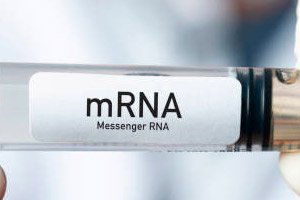
All iLive content is medically reviewed or fact checked to ensure as much factual accuracy as possible.
We have strict sourcing guidelines and only link to reputable media sites, academic research institutions and, whenever possible, medically peer reviewed studies. Note that the numbers in parentheses ([1], [2], etc.) are clickable links to these studies.
If you feel that any of our content is inaccurate, out-of-date, or otherwise questionable, please select it and press Ctrl + Enter.
Twin studies reveal early successes in mRNA HIV vaccine development
Last reviewed: 03.08.2025

Efforts to create an HIV vaccine have been slowed by difficulties in targeting neutralizing antibodies to the correct sites on the various HIV variants. Neutralizing antibodies are proteins produced by the immune system that bind to viruses, bacteria, or other pathogens and block their activity.
Most current approaches rely on soluble protein trimers of the HIV-1 envelope glycoprotein (Env), structures found on the surface of the virus that are essential for attachment and entry into host cells. These efforts are focused on creating stable, natural-looking Env trimers that closely mimic the functional spike of the virus, functioning as a training target for neutralizing antibodies that could potentially target conserved regions common to a wide range of HIV variants.
A number of molecularly complex hurdles have prevented these vaccines from working as intended. Although native trimers induce antibody production, they are not neutralizing, and they tend to target parts of the Env trimer base that do not block attachment and entry functions.
Two new studies published in the journal Science Translational Medicine present results from trials of mRNA vaccines against HIV.
A team of scientists from the Scripps Institute has developed an mRNA-encoded HIV vaccine that directs the immune response away from non-target sites and focuses on attachment and entry sites.
In the study, "Vaccination with mRNA-Encoded Membrane-Bound HIV Envelope Trimer Induces Neutralizing Antibodies in Animal Models," the researchers generated and compared mRNA-delivered versions of the stabilized HIV Env trimer (BG505 MD39.3) in soluble and membrane-bound forms to assess their ability to direct the immune response to target sites of interest.
In the soluble version, cells are instructed to synthesize trimers of HIV Env, which are released into the extracellular space after translation. These proteins are not anchored to the cell membrane and float freely.
In the membrane-bound version, cells synthesize trimers of HIV Env that are attached to the cell surface via a transmembrane domain.
The results showed that the membrane-bound HIV envelope trimer elicited neutralizing antibodies in rabbits and primates (rhesus macaques), superior to the soluble version of the same antigen.
T cell response assays revealed robust CD4+ T cell responses in both mRNA vaccine groups. CD8+ T cell responses were detected in most animals receiving the membrane-bound mRNA vaccine and were virtually absent in the soluble version group, and off-target memory B cell binding was less frequent. Bone marrow samples taken nearly one year after immunization showed persistent Env-specific plasma cells.
A clinical trial conducted by the Fred Hutchinson Cancer Center has demonstrated for the first time in humans that mRNA HIV vaccines can induce neutralizing antibodies. Results showed that mRNA-encoded membrane-bound HIV envelope trimers elicited a neutralizing antibody response in the majority of participants.
In the phase I clinical trial, "Vaccination with mRNA-Encoded Membrane-Bound HIV Envelope Trimers Induces Second-Tier Neutralizing Antibodies," the researchers developed three vaccine constructs encoding stabilized HIV Env trimers in either soluble or membrane-bound forms. The third version included a mutation that interferes with CD4 binding to reduce unwanted conformational changes in the trimer.
The study involved 108 HIV-negative adults aged 18 to 55 at 10 sites in the United States. They received three doses of one of six vaccine regimens. Three immunizations with membrane-bound trimers elicited neutralizing antibodies in 80% of participants. The response appeared after the second dose and increased after the third.
Header antibodies in serum remained detectable six months after the last vaccination. Antibody binding to non-target epitopes was higher in this group, and the frequency of memory B cells binding to the neutralizing portions of the Env trimer responsible for attachment and entry functions was higher.
A safety alert was identified: 6.5% of participants developed mild to moderate chronic urticaria. All vaccine versions were associated with this event. Most symptoms resolved or improved with antihistamines, but two participants had symptoms that persisted for more than 32 months. One severe case of urticaria required short-term hospitalization.
The authors conclude that mRNA vaccines encoding membrane-bound HIV trimers are effective in eliciting second-tier neutralizing antibodies (HIV-resistant), durable B-cell memory responses, and CD4+ T-cell activity.
Although the antibodies generated remain largely strain-specific, the results of these two publications represent important steps in the development of an HIV vaccine using mRNA technology. Further research into increasing neutralizing activity will be needed to achieve broad protection against HIV.
